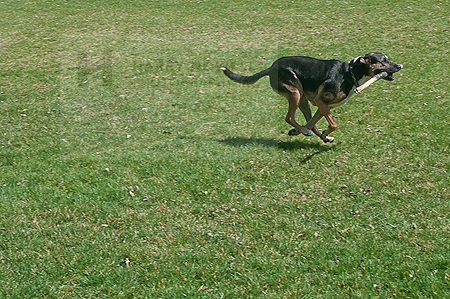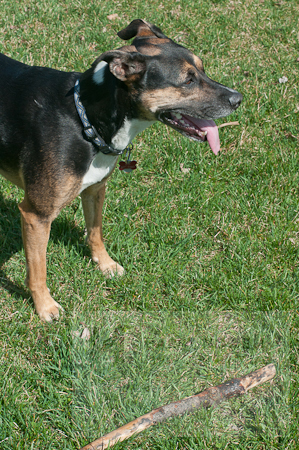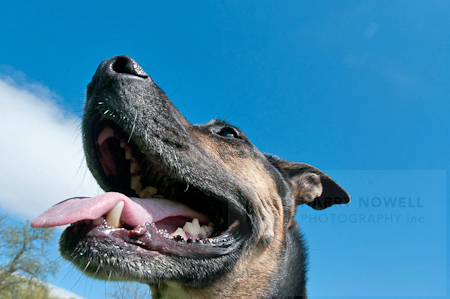Exposed! :: Close, Closer, Closest ::
© Copyright 2012. All Rights Reserved.
Contents
"What am I supposed to be looking at?" I wonder quietly. Sometimes, the main focal point in photos is not so obvious. My advice to our photo workshop students is often "Get Closer." It's one of the easiest ways to make your photos better.
In this edition of Exposed! we look at style of closeness, common reasons NOT to get close and strategies to get closer.

Shot with a 50mm lens from across the field - Close...
When I look at a photo and nothing leaps from the page one quick fix is to get closer to SOMEthing. How should you get closer? There two ways that will create different styles:
Closer Style Considerations
There are two simple, easy ways to get closer:
- Zoom in with a stronger, bigger lens to pull the subject closer.
- Use your feet to physically get closer to the action.
The two closeness strategies produce very different styles:
- Using bigger guns, er, lenses will pull the subject closer to the viewer but also create a more distant feel to the photo. While the subject will be big in the frame (that's good) the viewer will not feel involved.
- Using your feet to get closer to your subject, at some point, will add some intimacy or feeling of involvement in the photo.
Roadblocks to closeness
"I'm too shy to get closer!"
The easy fix for shyness is to get a big lens and pull the distant action close to you. Easy! A 200 or 300mm lens can get you better results without causing you close proximity anxiety.
The HARDER solution is to challenge your shyness. This solution has NOTHING to do with technical photography but everything to do with better photos.
Overcoming shyness takes small steps and means getting comfortable getting inside someone else's comfort zone. Start without your camera and go ask an (appropriate) stranger a question. As you get comfortable get more bold. After enough ice breaking introduce your camera into the conversation.

Shot with a zoom at 118mm from 10 feet away - Closer...
"I have the wrong lens. I can't get close enough."
Hogwash! There's no wrong lens - just the wrong moment to use it. I've used a super wide 14mm (not a 'sports lens') to shoot pro hockey as players were plowed into the boards inches from me.
And I've used BIG lenses for close up people portraits.
If you have lemons (the wrong lens) make lemonade (find creative ways to make it work!)
Having said that there are ways to get closer:
- use your feet
- earn access into preferred media areas (challenging)
- ok, ok ... sometimes, for some events, a longer lens is helpful to get closer. Consider renting if you don't want to buy.
"I don't want to intrude or be involved in the scene."
Sometimes, becoming involved in your subject is not appropriate - at a hockey game, in a war zone, or a dance performance - a long lens is preferable in some instances to pull the action to you.
At other times it can be very appropriate to get involved and influence the photos. In portraiture, photojournalistic weddings, and some social documentary stories it can be beneficial, even encouraged, to influence the subjects of your photos.
You are creating the photos. That means you are influencing the exposure, composition, and look of the photo - you can also influence the people in the photo.
In our Natural Light Portrait course I regularly bellow "You cannot ask them to smile, you have to make them smile!"
It's true. Your presence can influence the photo in positive ways - your interactions with the people (horses, dogs) can create the emotion that earns the gold medal photo.

Shot with a 14mm lens from a foot away - Closest...
Homework
Different levels of 'close' offer very different effects on the viewer. Biscuit the dog helped me illustrate this point. We shot the three photos for this article in the park to illustrate "Close, Closer, Closest."
Each photo stands on its own but offers a very different reaction. The top photo feels distant while the last one offers a more involved feeling (and slobber - I had to wipe my lens.)
Your homework today is to create a portrait with a very wide angle lens - 14mm, 18mm, 24mm. And, yes you must get close. Closer!
You must take your portrait from NO FURTHER than three feet from the person. That's one metre.
Pick someone you know to start. As you get comfortable pull out your camera on the bus, in a market - choose appropriate strangers. Strike up a conversation and when you're both ready pull out the camera!
Pro Perspective
The story goes that a young Yousuf Karsh was commissioned to photograph Winston Churchill, one of the most powerful men in the world. Just as the studio was ready Karsh rudely plucked the cigar from Churchill's mouth creating the defiant, almost bulldoggish expression that is famously captured in one of Karsh's most memorable portraits. Karsh got close and intruded to create the classic bulldog portrait.
Final Frame
Take photos.
Get closer.
Have fun.



